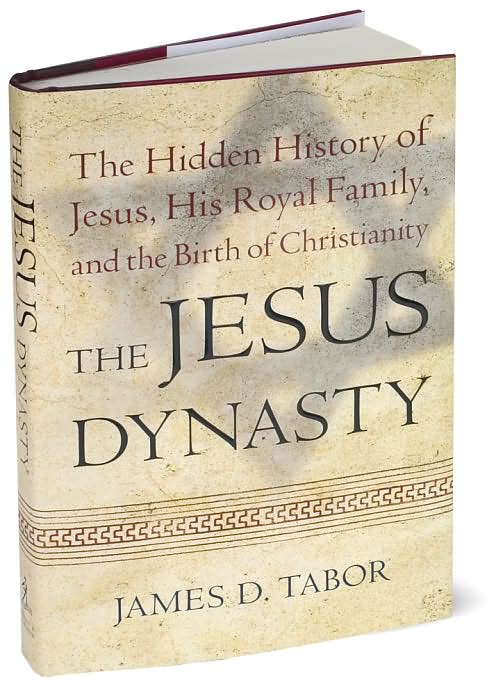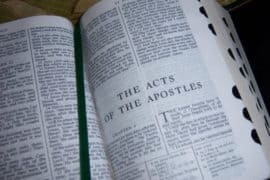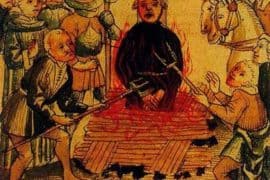In April, 2006 I published a trade book called The Jesus Dynasty: The Hidden History of Jesus, His Royal Family, and the Birth of Christianity. Now in paperback it has continued to sell moderately but steadily. I wrote it as a popular summary of my own personal lifelong “quest” for the historical Jesus. It is written in a style accessible to the non-specialist. Many readers find that it pulls them into the story in an engaging fashion. Some have even called it a “page-turner.” It also has extensive references and notes. It received an enormous amount of media attention when it was released, including ABC’s Nightline, 20/20, Good Morning America, and a cover storie on USNews&World Report. It has also been translated into more than a twenty foreign languages. It is available in all major e-book formats (Kindle, iBooks, Nook) as well as an CD Audio version ready by yours truly, see links here.

A comprehensive review by Professor Dennis Groh is here, along with a three-part review by Prof. Jim Strange with my responses here. The central issue, as Strange rather provocatively put things, is “Was Christianity all a mistake?”
The following is a summary of some of the main substantive points made in the book that advance our understanding of Jesus and early Christianity. If you have not read it it maybe well be that these themes will grab your attention. I know of no other book on the historical Jesus that includes these wider parameters in trying to understand Jesus as a human being in his own time and place.
1. The Material Evidence
One of the unique features of The Jesus Dynastyis the way in which archaeological discoveries inform and offer a new interpretive context to the unfolding Jesus story. Whether one is considering the location of the family tomb of Jesus, the splendor of the Roman city of Sepphoris, just north of Nazareth, the site of the Suba “John the Baptist” cave, or the location of the sites of the Last Supper, trial, and crucifixion of Jesus in Jerusalem, Jesus is put in a time and place that becomes real to us through the material evidence that survives.
2. The Historical Mary
Much has been said about the “historical Jesus” but little attention has been given to Mary his mother. She is shrouded in legend, interpreted by theology, and the focus of personal devotion and piety. But what does history actually tell us? She is an unwed mother, a young Jewish woman, Miriam, mother of seven children, eventually widowed, struggling to survive in a troubled time, courageous and full of vision for her gifted children. So much of what Jesus and his brother James became has to trace back to her strong influence.
3. Jesus and John the Baptist
The relationship between Jesus and his kinsman John is a much neglected aspect of the Jesus story. John has been marginalized and minimized as the precursor of Jesus, introducing him and then quietly moving off the stage. John was in fact the most important influence in Jesus’ life. Their mothers were close. They likely knew one another growing up. Jesus looked to John as mentor and teacher and they joined ranks in their shared vision for Israel’s prophetic future as the twoMessiahs, conducting a preaching campaign that rocked the nation back on its heels and drew the attention of the Roman authorities. John’s unexpected death was a vital factor in his own developing understanding of the role he and John were destined to play in the course of history, ultimately leading him to the cross.
4. Messianic Self-Identity
Jesus’ own Messianic self-identity, from an historical point of view, was a complex mix of his own royal pedigree, his reading of biblical prophetic texts, and unfolding events. He came to see that his destiny required him to confront the authorities in Jerusalem, and like John, face opposition and perhaps even death. He found himself in the sacred texts of Scripture, and at the same time he began to act out in his own life and career the series of events that would lead up to his death. His was no “Passover plot,” but a giving of the self for a cause in hope and trust that God would somehow honor his faith and fulfill the promises of the Kingdom.
5. On Earth, not in Heaven
The vision of the kingdom of God shared by John, Jesus, and their early followers was a spiritual one, but on earthnot in heaven. Like the Hebrew Prophets they looked for a time in which peace would come to all nations and righteous and justice would emanate from Jerusalem as the new spiritual capital of a restored Israel, a beacon light to the world. The entire world would turn from idolatry to worship of the one true Creator God. The two Messiahs were to inaugurate that new era and their deaths would serve for the redemption of the world.
6. James and the Brothers as Successors of Jesus
Although recent studies have moved a long way toward rehabilitating the memory and importance of James, the brother of Jesus, his vital role as the “beloved disciple” and pillar of the Church has been largely lost and forgotten. A recovery of the “historical James” is not only possible, but it is perhaps our best method for getting back to the historical Jesus as well. The towering influence of James was based both on his pedigree, as a descendant of the royal line of King David, and also upon his remarkable faith and strong character, exhibited for over thirty years following the death of his brother. That Simon took charge of things after James’s death indicates that this dynastic aspect of early Christianity has been largely lost and forgotten through the legendary dominance of Paul and Peter. An understanding of the Jesus Dynasty is our clearest entrée to really understanding both the faith and the message of Jesus and his earliest followers.
7. Recovering the Original Gospel
Paul’s gospel message is the formative influence within the entire New Testament and thus forms the foundation of what became world Christianity. In contract, the original message of John the Baptist, Jesus, and James is a singular one that was gradually, forgotten, suppressed, and marginalized in a Gentile Church that largely lost its Jewish roots and origins. That message can be recovered in both the New Testament and other ancient sources through a careful sifting of textual evidence and a commitment to recover the lost treasures of earliest Christianity. Throughout the book John the Baptist, Jesus, and James are put in the thoroughly Jewish 1stcentury contexts in which they are most clearly understood historically.
If you have not read The Jesus Dynasty I hope you will give it a try. If so please leave a review at Amazon and write me your impressions if you wish (jdtabor [at] uncc.edu).









Comments are closed.